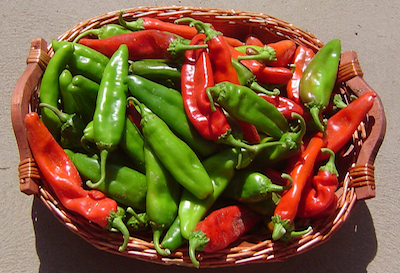The same friendly environment that promotes seedling growth also provides perfect breeding conditions for common greenhouse pests such as aphids, white flies, mealy bugs, and spider mites. Aphids are probably the most common insect pest that attacks seedlings. Although spraying with dilute nicotine sulfate or diazanon solutions will kill them, it is not the best solution to the problem because the chemicals can burn the leaves and stems of the seedling, thus inhibiting growth. A non-toxic method is to wash the aphids off the seedlings every day with a stream of water. This procedure is labor-intensive, but it works. Another method is to spray the seedlings with a solution of Ivory soap or Safe’s Insecticidal Soap.
Mealy bugs are soft-bodied insects that look like pieces of white fluff. They do not move around much, but once they are established they can suck plenty of sap out of pepper plants. The least toxic way to kill them is to touch them with a swab dipped in isopropyl alcohol.
Whiteflies, another common greenhouse pest, are more difficult to kill because they are so mobile. They can be controlled, but probably not eliminated, by closing up the greenhouse and fumigating it by spraying a flying insect insecticide. The greenhouse should be closed up for ten minutes, then ventilated. Also useful are the yellow, sticky cards that attract the flies and trap them.
By far the most difficult pests to control are spider mites, barely visible eight-legged arachnids that build small webs on the underside of leaves and thus are hard to spot. They can be controlled by spraying the underside of pepper leaves with insecticidal soap or Diazanon, according to the manufacturer’s instructions. We always prefer mechanical removal of pests by water spraying or gentle scraping rather than the application of chemical insecticides.
The most devastating problem of the humid greenhouse is damping-off, a fungal disease that causes the stem base to rot and the seedling to topple over. Damping-off can quickly wipe out an entire greenhouse of seedlings. The disease proliferates in still, very moist air, so the first line of defense is good air circulation. In humid growing environments, an extra fan in the greenhouse to blow air around is a necessity. The seedlings also can be treated with the fungicide Benomyl according to the manufacturer’s instructions.
Latest posts by Mark Masker (see all)
- 2024 Scovie Awards Call for Entries - 07/07/2023
- 2024 Scovie Awards Early Bird Special: 3 Days Left - 06/29/2023
- 2024 Scovie Awards Early Bird Deadline Looms - 06/25/2023









